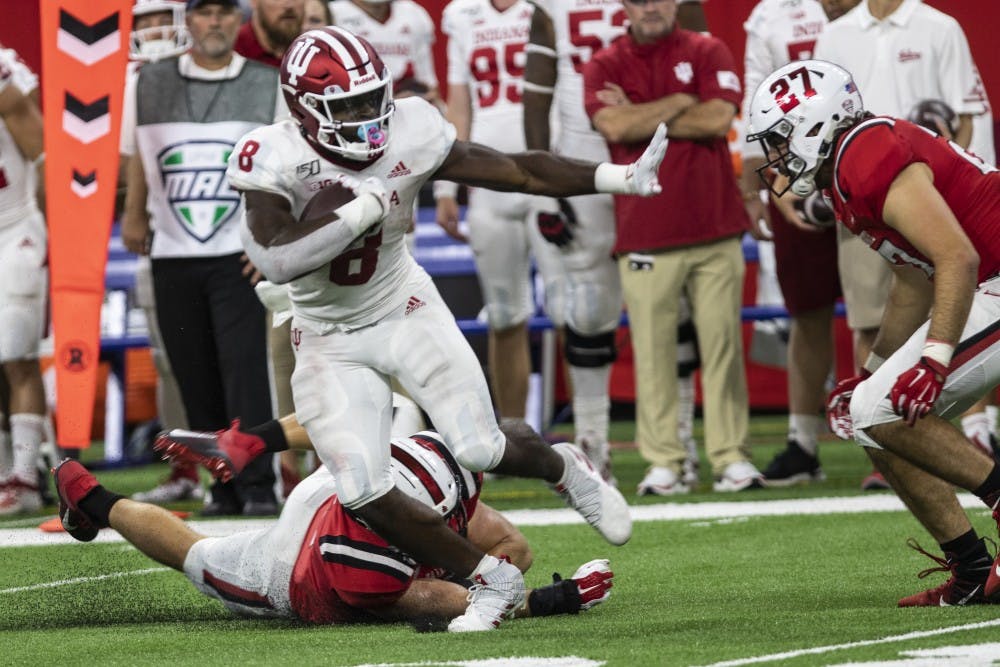Overshadowed by freshman Michael Penix Jr.’s impressive debut as the IU starting quarterback in the 34-24 victory over Ball State, was the extremely surprising absence of a constant running game.
While Penix was impressive on the ground with both scrambles and designed quarterback runs, leading the team with 67 yards on just over nine and a half yards per carry, IU will not have a successful season if a quarterback is the leading rusher. Even though it is nice to have a quarterback that can run, it is risky from a health standpoint to have the man under center be subject to a large amount of hits that a lead rusher takes on a weekly basis. Plus, it creates a more balanced offense when running backs create big plays on the ground.
IU’s running backs had higher expectations than any other position group in the preseason. Sophomore Stevie Scott rushed for over 1,100 yards as a freshman and was named to the Maxwell and Doak Walker award preseason watch lists. Freshman Sampson James was a top ten recruit nationally and chose the Hoosiers over Ohio State. Sophomore Ronnie Walker Jr. was a former top 25 running back recruit that was supposed to see his production grow exponentially after a quiet first year in Bloomington. Junior Cole Gest has returned from a torn ACL to provide speed and pass catching ability out of the backfield.
However, all four running backs struggled mightily against Ball State. The quartet combined for just 65 yards on the ground on 22 carries, which led to less than three yards per carry. But the running backs themselves should not bear the brunt of the blame. The IU offensive line did not create any push on the line of scrimmage throughout the game, and really only one time — on Scott’s four yard touchdown run in the third quarter — did the line create a hole large enough for a potential big play for a running back.
Ball State also does deserve credit for defending the run effectively. The Cardinals loaded the box routinely to make it more difficult to run the football.
“[We] didn't run the ball as well as we wanted to,” head coach Tom Allen said. “They loaded us up a lot and they had an extra guy most of the time and we have to do a better job adjusting to that.”
Even though Ball State loaded the box all game Saturday afternoon, IU should have the bulk up front to be able to bully a MAC team that surrendered 239.8 rushing yards per game in 2018, which was the tenth worst rushing defense in the FBS [ESPN]. The fact that IU could not establish a run game against Ball State is extremely concerning moving forward and makes IU’s matchup with Eastern Illinois University more intriguing.
Even though EIU only allowed 94 rushing yards in a loss to the University of Chattanooga last week, they gave up over 216 yards per game on the ground against FCS competition last season. This makes their date with IU signal an afternoon of Stevie Scott and co. finding their footing after a poor opening weekend performance against Ball State.
However, if the offensive line can’t push the Panthers around in the running game, the serious concerns from the Ball State game may become more of a reality for the Hoosiers. Because if IU can’t run the ball effectively against Ball State or EIU, how is anyone supposed to expect the Hoosier ground game to be at the level it needs to be for IU to compete with the upper level — or even the middle levels — of the Big Ten?



